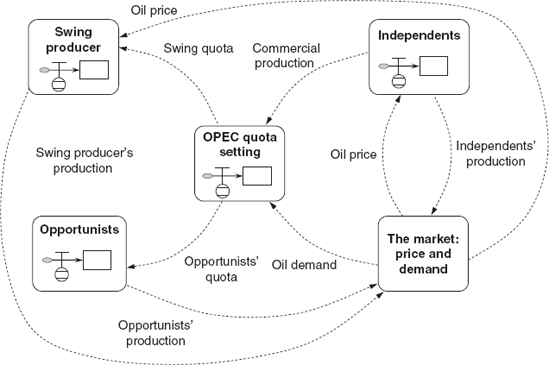8.2. Model Development Process
There is clearly more to the global oil system than a simple balancing loop with delay. To gain more insight into the structure of the industry the project team (10 people in all) came together to share their knowledge about oil companies, oil producing nations and motives for investment and production. The team met three times for working sessions lasting three hours each. The meetings were facilitated by an experienced system dynamics modeller. One member of the team kept detailed minutes of the meetings (including copies of flip-chart notes and diagrams) in order to preserve a permanent trace of the model's conceptualisation. A sub-group of the project team met separately to develop and test a full-blown algebraic model.
Figure 8.3. Overview of global oil producers

Figure 8.3 shows the resulting overview of global oil producers comprising five main sectors. On the right are the independent producers making commercial investment decisions in response to the needs of the market and oil consumers. On the left are the swing producer and the opportunists that make up the oil producers' organisation OPEC. This powerful group of producers has access to very large reserves of low-cost oil. Their production decisions are motivated principally by political and social pressures, in contrast to the commercial logic of the independents. They coordinate production ...
Get Strategic Modelling and Business Dynamics: A Feedback Systems Approach now with the O’Reilly learning platform.
O’Reilly members experience books, live events, courses curated by job role, and more from O’Reilly and nearly 200 top publishers.

